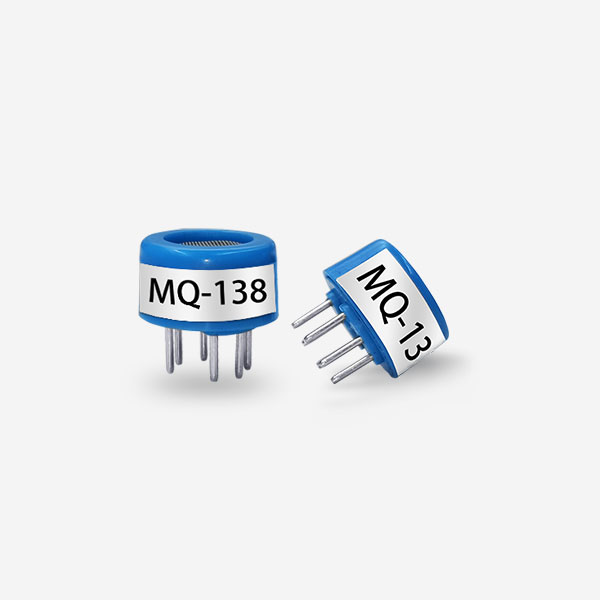Electrochemical sensors are versatile devices used for detecting and measuring various chemical substances in different applications, ranging from environmental monitoring to medical diagnostics. These sensors operate based on electrochemical principles, where chemical reactions generate electrical signals that can be quantified. In this comprehensive article, we will delve into the working mechanisms of electrochemical sensors, their types, applications, and the significance of their role in modern technology.

Understanding Electrochemical Sensors:
Electrochemical sensors are analytical devices that convert chemical information into electrical signals through redox reactions (oxidation-reduction reactions). These sensors typically consist of an electrode system immersed in a solution containing the target analyte. When the analyte interacts with the electrode surface, it triggers a redox reaction that produces a measurable electrical signal proportional to the analyte concentration.
Oxidation-Reduction Reactions:
At the core of electrochemical sensing is the oxidation-reduction (redox) reaction that occurs at the electrode surface. When the target analyte comes into contact with the working electrode, it undergoes either oxidation (loss of electrons) or reduction (gain of electrons), leading to a change in the electrode's electrochemical potential. This change generates an electrical signal that is proportional to the concentration of the analyte.
Electron Transfer:
During the redox reaction, electron transfer occurs between the analyte and the electrode. The movement of electrons generates an electrical current that can be measured using appropriate instrumentation. The rate of electron transfer is directly related to the concentration of the analyte in the solution, allowing for quantitative analysis of the target compound.
Signal Transduction:
The electrical signal produced by the redox reaction is transduced into a measurable output, such as voltage or current, by the sensor electronics. This signal is then processed and interpreted to determine the concentration of the analyte. The sensitivity and selectivity of the sensor depend on factors such as electrode material, surface properties, and reaction kinetics.
Types of Electrochemical Sensors:
Electrochemical sensors encompass various types based on their operating principles and applications. Some common types include:
Amperometric Sensors:
Amperometric sensors measure current flow resulting from redox reactions at the electrode surface. They are sensitive and selective, making them suitable for detecting gases, ions, and organic compounds in environmental monitoring, healthcare, and industrial processes.
Potentiometric Sensors:
Potentiometric sensors rely on measuring changes in electrode potential without drawing current. They are used for pH sensing, ion-selective measurements, and gas detection, offering simplicity and cost-effectiveness in certain applications.
Conductometric Sensors:
Conductometric sensors detect changes in conductivity due to the presence of target analytes. They are commonly employed in gas sensing, biosensing, and chemical analysis, providing rapid and reliable measurements based on conductivity variations.
Impedimetric Sensors:
Impedimetric sensors monitor changes in impedance caused by interactions between the analyte and the electrode surface. They offer high sensitivity and can be utilized for label-free detection of biomolecules, pollutants, and chemical species.
Applications of Electrochemical Sensors:
Electrochemical sensors find diverse applications across various industries and fields, including:
Environmental Monitoring:
Electrochemical sensors are used to monitor air quality, water pollution, and soil contamination by detecting volatile organic compounds, heavy metals, and other environmental pollutants. They enable real-time, on-site analysis for environmental protection and remediation efforts.
Biomedical Diagnostics:
In healthcare, electrochemical sensors play a vital role in disease diagnosis, glucose monitoring, drug detection, and biomarker analysis. They provide rapid and accurate measurements for point-of-care testing, personalized medicine, and therapeutic monitoring.
Food Safety:
Electrochemical sensors are employed in the food industry to detect contaminants, toxins, and spoilage indicators in food products. They ensure food safety and quality by identifying harmful substances and ensuring compliance with regulatory standards.
Industrial Process Control:
Electrochemical sensors are integrated into industrial processes for monitoring chemical reactions, detecting gas leaks, and controlling production parameters. They contribute to process optimization, quality assurance, and industrial safety measures.
Renewable Energy:
In the field of energy storage and conversion, electrochemical sensors are utilized for monitoring battery performance, fuel cell efficiency, and electrolyte properties. They help enhance the reliability and sustainability of renewable energy systems.
Sensitivity and Selectivity:
Electrochemical sensors offer high sensitivity and selectivity, enabling the detection of trace amounts of target compounds in complex matrices. This capability is critical for accurate and reliable analysis in diverse applications.
Rapid Response and Real-time Monitoring:
Electrochemical sensors provide rapid response times and real-time monitoring capabilities, making them ideal for dynamic environments where quick measurements are essential. This feature is valuable in environmental monitoring, healthcare, and process control applications.
Miniaturization and Portability:
Advancements in sensor technology have led to the miniaturization and portability of electrochemical sensors, allowing for on-site and field-based analysis. Portable sensor devices enable decentralized testing, remote monitoring, and point-of-care diagnostics.
Cost-effectiveness and Versatility:
Electrochemical sensors offer a cost-effective solution for chemical analysis compared to traditional laboratory techniques. Their versatility in detecting a wide range of analytes across different industries makes them indispensable tools for researchers, engineers, and analysts.
Sustainable Solutions:
By facilitating rapid detection and monitoring of environmental pollutants, electrochemical sensors support sustainable practices in pollution prevention, resource conservation, and ecosystem protection. Their role in advancing green technologies and clean energy aligns with global sustainability goals.
Conclusion:
Electrochemical sensors represent a cornerstone of modern analytical chemistry, providing valuable insights into chemical processes, environmental conditions, and biological interactions. Their ability to convert chemical signals into electrical responses has revolutionized various fields, from healthcare to environmental science to industrial manufacturing. Understanding the working principles, types, applications, and significance of electrochemical sensors underscores their importance in advancing technology, fostering innovation, and addressing societal challenges. Embracing the capabilities of electrochemical sensors opens up new possibilities for enhancing efficiency, accuracy, and sustainability in a rapidly evolving world.
 : +86 155 8830 2704
: +86 155 8830 2704 : jxdziot@gmail.com
: jxdziot@gmail.com
